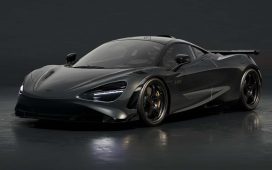The UK advertising watchdog has banned campaigns by Toyota and Hyundai for exaggerating the speed at which electric cars can be charged and misleading consumers about the availability of rapid-charging points across the UK and Ireland.
The Japanese car firm Toyota ran a marketing campaign on its website for its bZ4X model with the text “making electric easy”. The site claimed the vehicle could be charged to 80% in about 30 minutes using a 150kW fast-charging system.
Toyota said drivers could “easily find rapid-charging points in a number of public locations”, especially in areas where “drivers were most likely to need them”, such as main travel points on motorways and large arterial roads.
Hyundai ran a similar campaign – using its own website, a digital billboard in London’s Piccadilly Square and a YouTube film featuring footballers from the Premier League club Chelsea, which the South Korean car manufacturer sponsors – promoting its Ioniq 5 model electric car.
The campaign claimed the vehicle could be charged from 10% to 80% in 18 minutes using a 350kW charger.

The Advertising Standards Authority received complaints challenging whether the charging times, which both companies admitted were achieved in perfect factory conditions, were achievable in the real world.
The claims about the availability of rapid-charging points across the UK, which would affect the likelihood of consumers achieving the claimed charging time, were also challenged.
Toyota said that at the time it ran the ad campaign, Zap Map, which shows where charging points are located, did not show the precise locations of rapid 150kW chargers but showed that overall there were 419 charging points at 134 locations across the UK. However, there were just seven in Scotland, two in Wales and none in Northern Ireland.
Similarly, the Charge myHyundai website showed that there were 37 ultra-fast 350kW charging locations in Great Britain, six in the Republic of Ireland, “limited numbers” in Wales and Scotland, and none in Northern Ireland.

The companies said their claims were not misleading as it was unlikely that drivers would need rapid-charging points on shorter journeys, meaning they could use the more widely available slower charge points, with many people using points fitted at home.
However, the ASA said the manufacturers had given the impression it was “relatively straightforward” to access rapid-charging points across the UK.
after newsletter promotion
The watchdog also found that numerous factors affected charging times in the real world, including the age and condition of a battery, the ambient temperature, and the battery temperature, all of which were controlled by the manufacturers in the tests used to make the claims.
“If any of those conditions were less than optimal, then charging times would likely take longer,” the ASA said.
The car manufacturers said it was essential that they be allowed to promote EV potential charge times to consumers to address obstacles to consumer take-up, such as range and charge anxiety, and a lack of awareness of the rollout of charging infrastructure.
However, the ASA banned the ad campaigns, the first ban it has instigated against electric car advertising claims, and told Toyota and Hyundai not to mislead consumers about battery charging times in future.
“We concluded that because the ads omitted material information about the factors that could significantly affect the advertised charging time and the limitations in relation to availability … the claims had not been substantiated and were misleading,” the ASA ruled.









